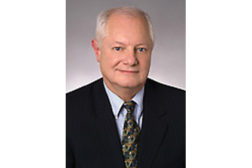Articles by Michael Gzybowski
The distinction between disclosing how to practice an invention and explaining how an invention works is important to understand when drafting patent applications.
Read More
IP in Depth: Effective Preissuance Submissions
Preissuance submissions are a one-chance opportunity to present prior art in such a way that an examiner will be convinced to apply the prior art to reject pending claims in a patent application.
June 2, 2014
IP in Depth: Compact Prosecution
Compact prosecution was originally conceived to speed up examination, shorten pendency and increase efficiency of patent prosecution.
May 1, 2014
IP in Depth: Expediting Patent Application Examinations
The USPTO developed four programs designed to speed up the examination of patent applications.
January 2, 2014
Keep the info flowing with our eNewsletters!
Get the latest industry updates tailored your way.
JOIN TODAY!Copyright ©2025. All Rights Reserved BNP Media.
Design, CMS, Hosting & Web Development :: ePublishing


